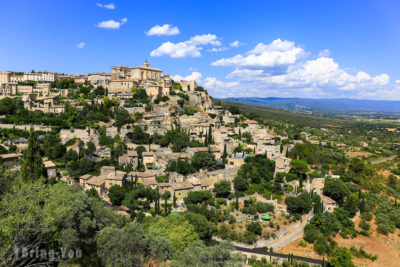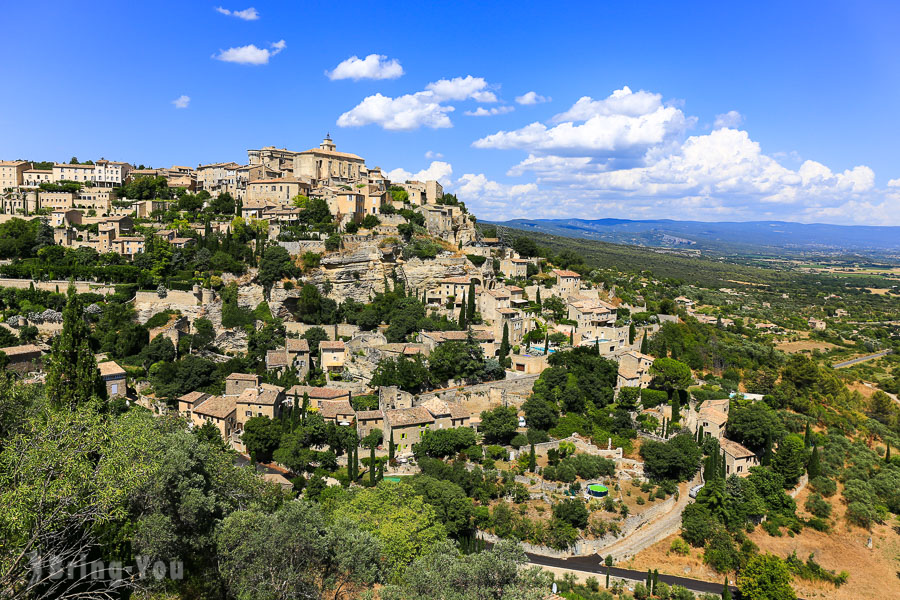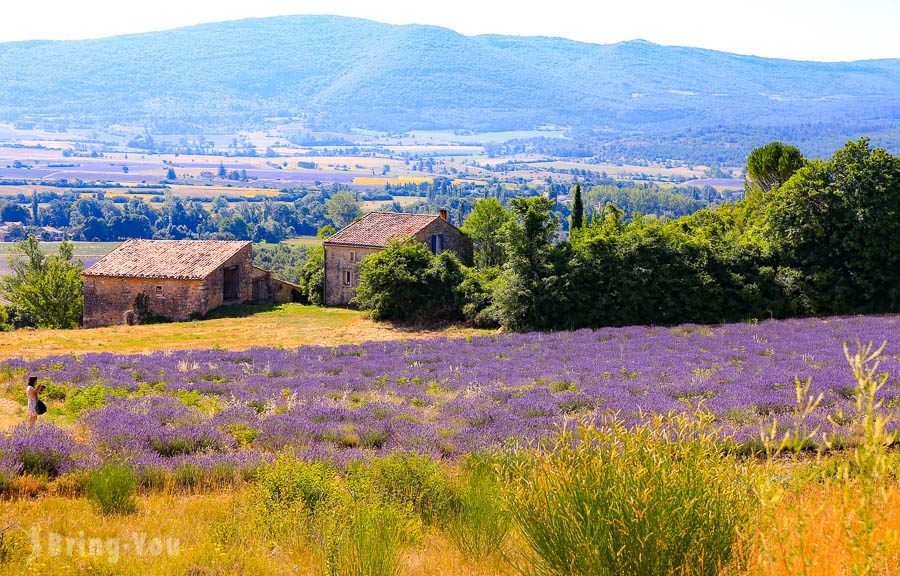
As the first trip to Valensole from Avignon came to an end, I couldn’t help thinking about the next day getting away to Sault and keeping up with my lavender treasure hunt. At first, I wanted to cover both Sault and Valensole in a day but the two places are 90 minutes apart by car so I decided to split them in two.
The first leg of the trip was made for Valensole, Lake of Sainte-Croix, and Gorges du Verdon while the second day focused on the southwest region of Sault where I could see the old villages of Roussillon and Gordes without rushing.
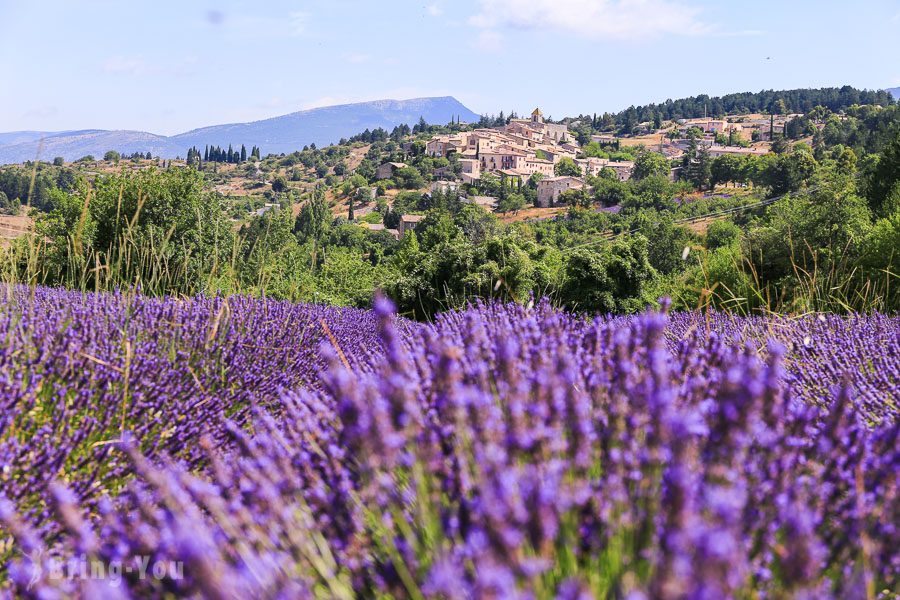
If you have a car, it would make a pleasant, delightful road trip down the scenic loop. If you don’t wanna rent a car, sign up for one of the full-day trips to Provence villages from either Avignon or Aix-en-Provence.
Without further ado, here’s a lowdown on my trip to Southeastern France.
Recommended Day Trips To Provence And Its Surrounding Areas
These day trip options mostly have the same starting time but the meeting venue varies depending on where you live.
Here are some of the best options you can consider:
This day trip sets sail to the Luberon towns of Lourmarin before heading to Roussillon and Gordes later in the day. You won’t be stopping over Sault this time but focus mainly on market immersion in L’Isle-sur-la-Sorgue and Lourmarin.
Starting at 9 am, this package is the best option for those staying in Avignon. It begins with a visit to the villages of the Luberon area and discovering the lavender fields before capping off the morning leg with Roussillon and Gordes.
Sault
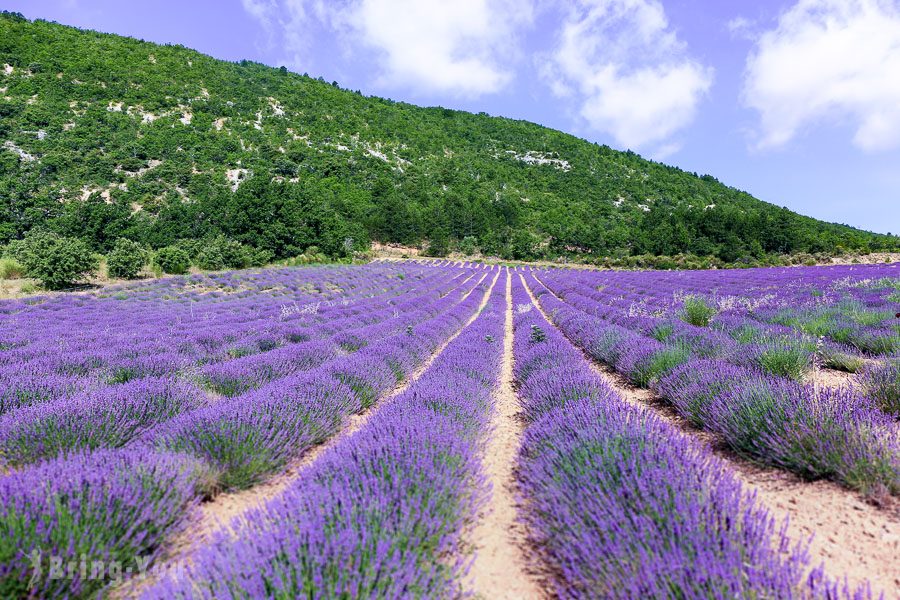
The Sault Plateau locks horns with the Valensole Plateau in the race to be the best lavender producers and the debate has never come to an end. Both of those areas attract a great number of visitors each year yet Sault has entitled to the higher-quality lavender thanks to its topography.
Sault is dubbed as one of the most gorgeous towns in all of Provence, blanketed by an infinite series of aromatic lavender fields. When August is around the corner, Sault is on top of the list for many photograph hunters.
I stopped by Sault as a getaway after spending a pleasant stay at Luberon. If you have your own car, try to get there by sunset after visiting Luberon in the morning. Planning wisely will reward you with the most awe-inspiring sunset you’ve ever seen.
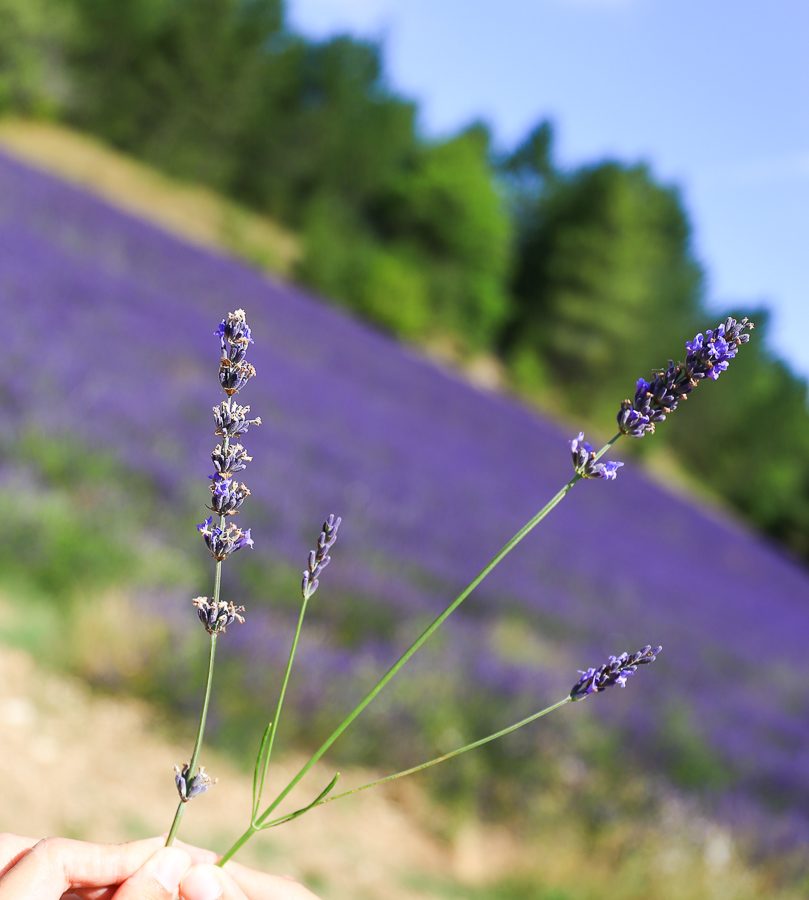
As soon as I landed in Sault, I rushed out my camera flashing away at the dramatic background of the stunning coastline swathing the majestic cliffs of the Southern Alps. From afar, the Alps run along the fields of olives, lavender, and sunflowers as your wheels are rolling on the sun-kissed narrow sections and hairpin turns.
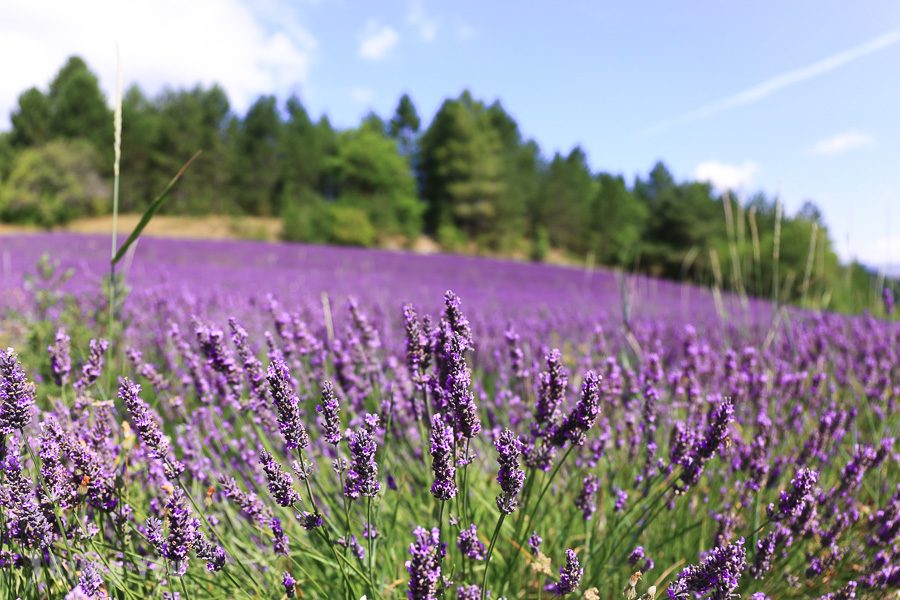
Feeling the Mediterranean breeze kissing my hair, I couldn’t help peeking at the tour leader showing his people how to distinguish different types of lavender. Most of those fields are privately owned, meaning outlanders are not allowed to barge in without authority and permission.
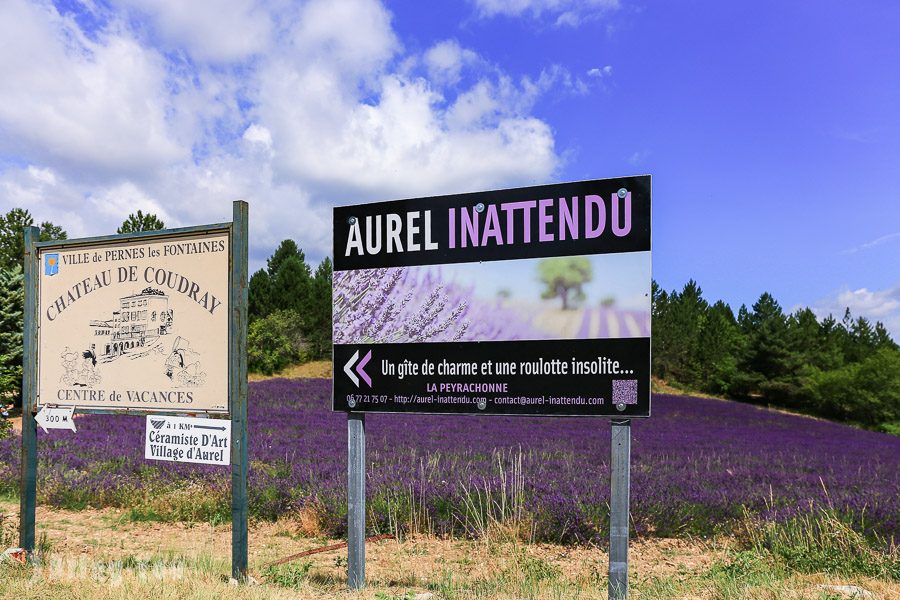
Sault ticked the box as the first destination of my scenic loop. It opens out to an even more exciting journey ahead with plenty of heritage villages waiting down south. The next destination on my list would be Roussillon.
Roussillon
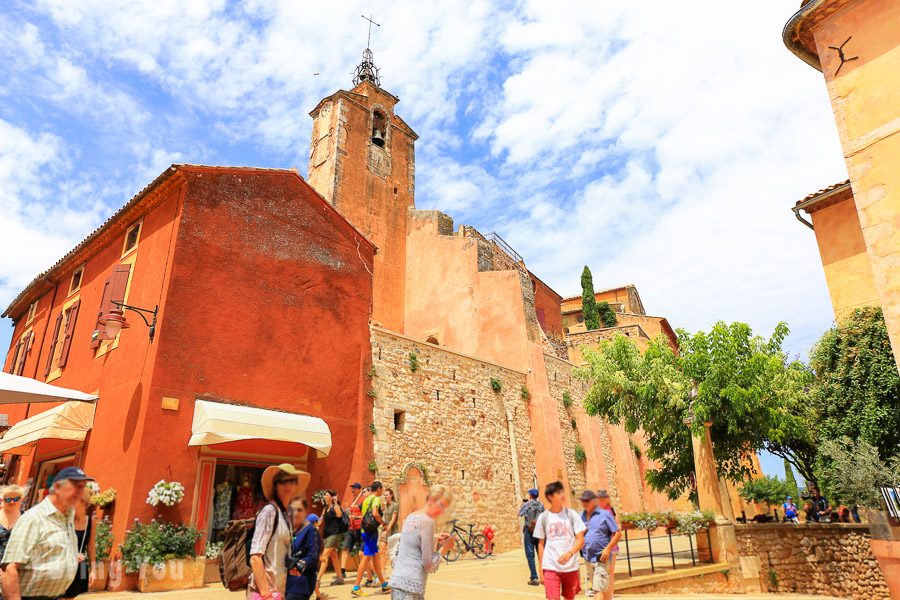
As you slowly turn into Roussillon, you will instantly feel a dramatic contrast between this bright, colorful palette and the lush violet of the lavender fields.
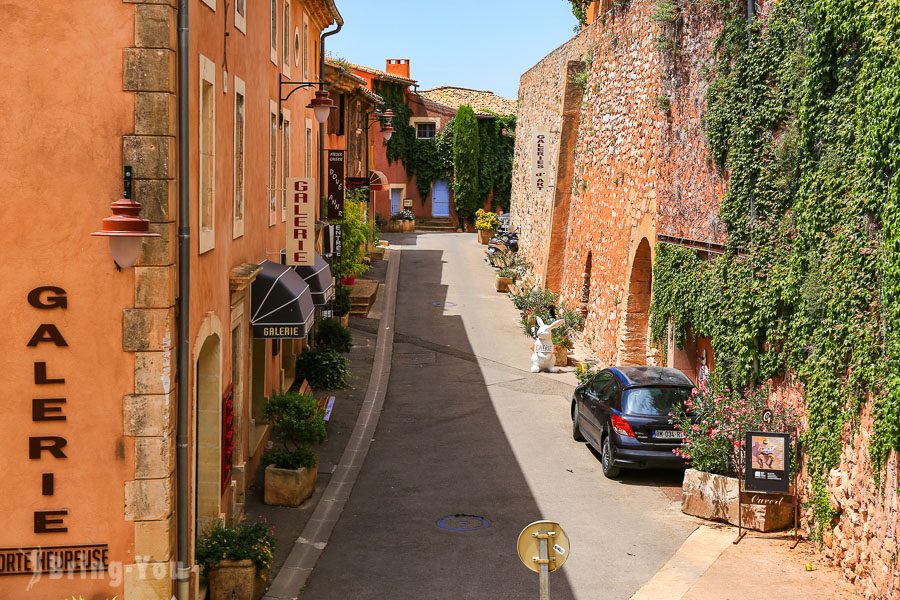
The quaint little village of Roussillon emerges as a playful mashup of color palettes with shades of coral orange and light salmon being the primary tones. Picture-worthy cafes, galleries, souvenir stores, and food vendors sprinkle the tiny alleyways.
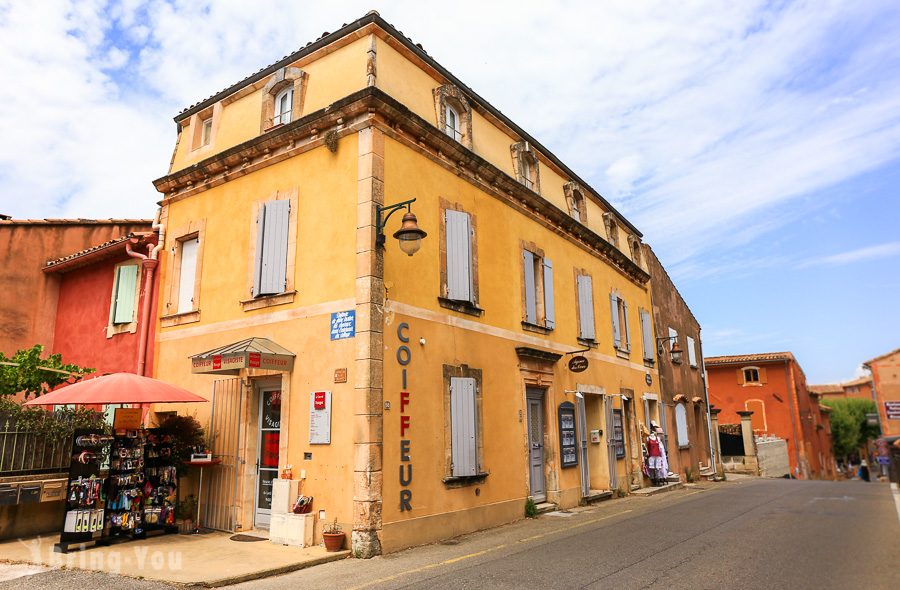
Such dramatic color is used in the construction of those heritage buildings thanks to the proximity to the nearby ochre mines. This type of ochre pigment is treated and processed to be used in the making of natural paint. The village was once the biggest producer of ochre worldwide.
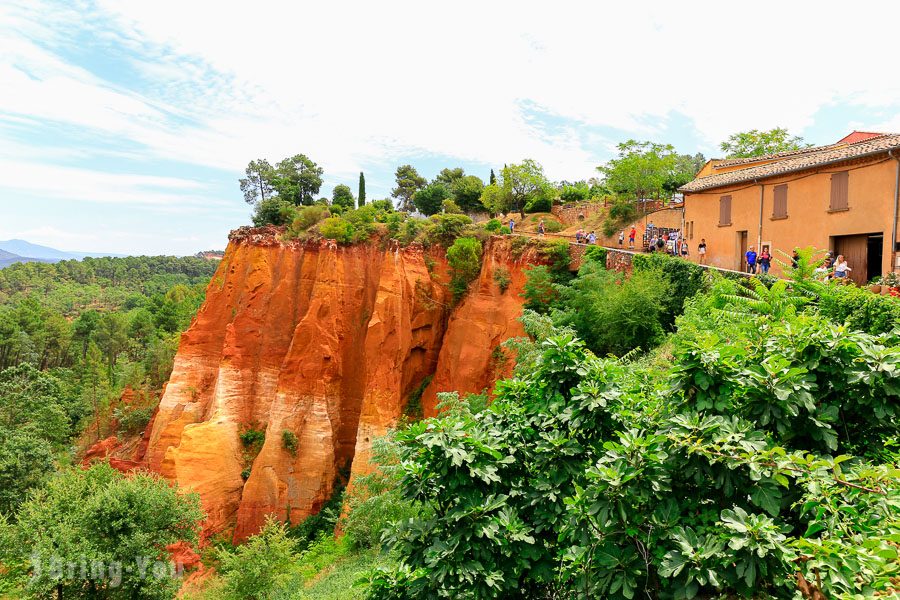
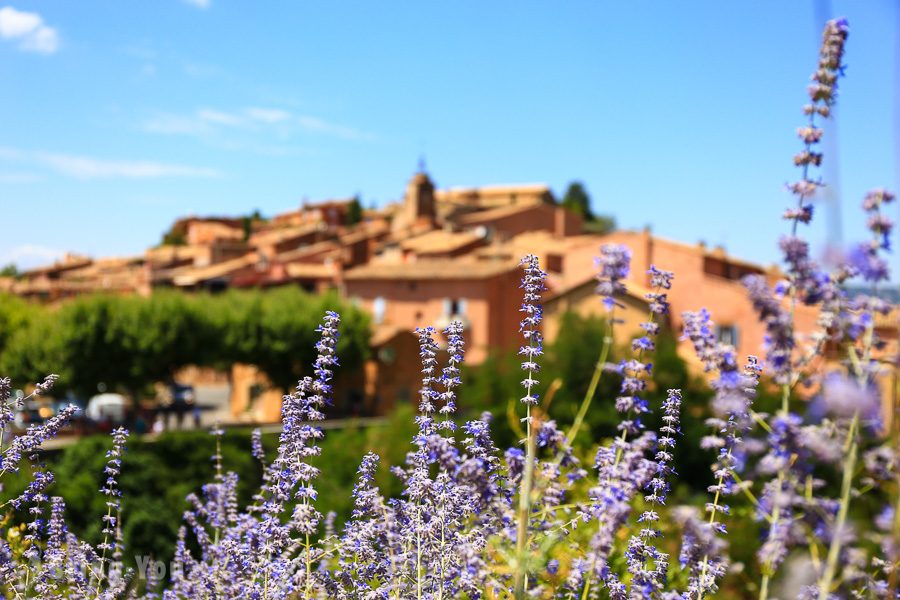
As the locals attest, these orange shades slightly change their tints throughout different seasons due to the intensity of sunlight. That being said, summertime always brings the most dramatic kind of red/orange to the scene.
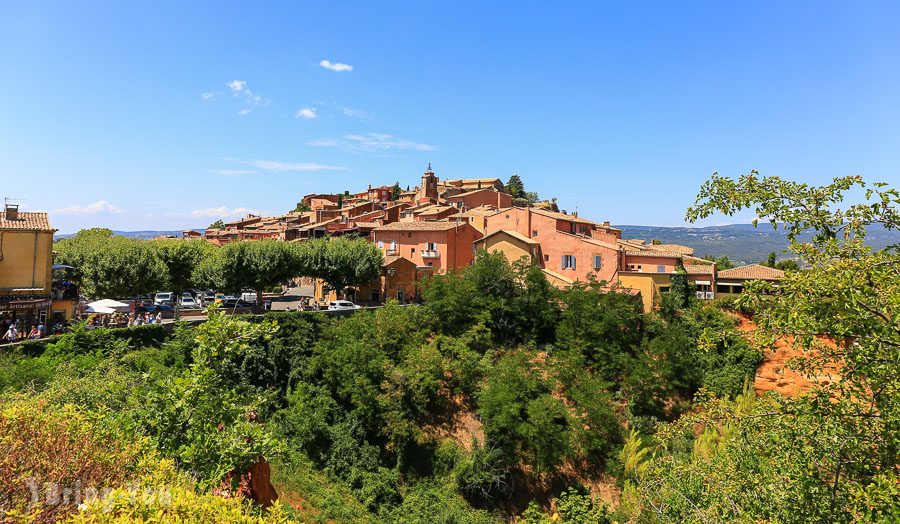
What a pity that I couldn’t stay longer to do any shopping. Those souvenir spots are just too cute to be skipped. So instead, I decided to rest up at La Grappe de Raisin, a charming bistro to munch on some of their authentic French dishes by the terrace with a view over Roussillon downtown.
Gordes
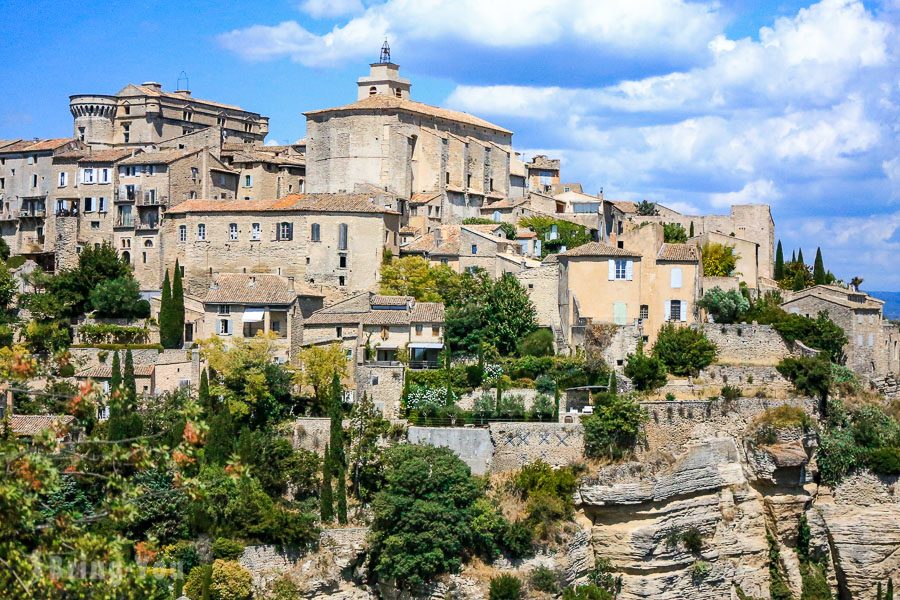
14 minutes west of Roussillon, Gordes is another whimsical village to visit in the south of France. Its rising popularity is tied to its reputation as one of the country’s most beautiful villages.
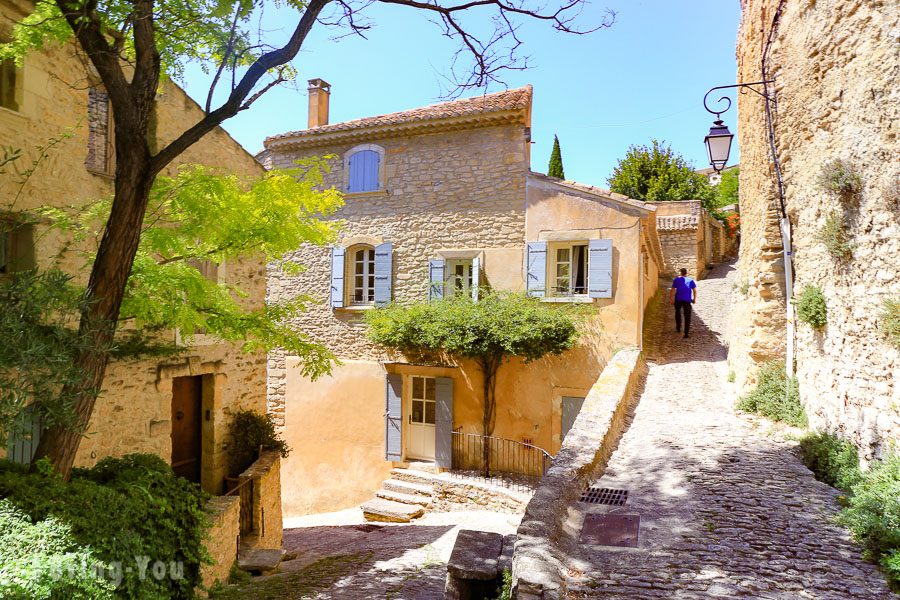
It’s hard to neglect the fact that Gordes is famous for a good reason. My eyes were glued to the hilltop granite stone houses sitting on top of the Vaucluse mountain, especially when the sun beams down, casting its glorious sunlight piercing through the windows and the washed-out walls.
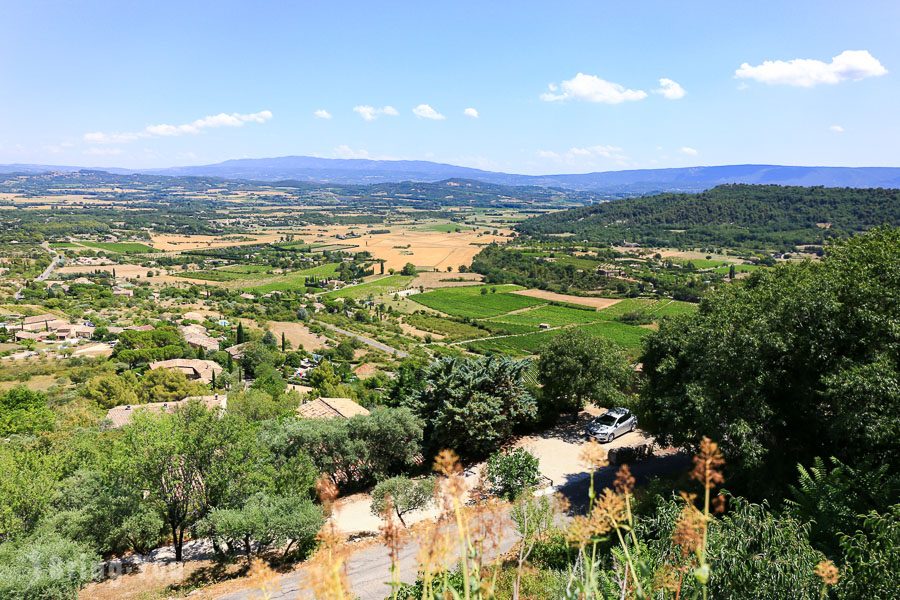
The entire village sits at an altitude of 635 meters with a long-established heritage dating back to the Roman Empire.
All of these buildings are steeped in a tranquil Renaissance style. Many of them have been around since the 16th century.
Today, the beautiful setting Gordes has to offer can also be seen through its sweeping wraparound vista, boasting a typical charm of the Provence-Alpes-Côte d’Azur region. On top of that, walking by many of its art galleries and exhibits while peeking through the artworks of these local ‘Gordien’ painters is part of the joy as well.
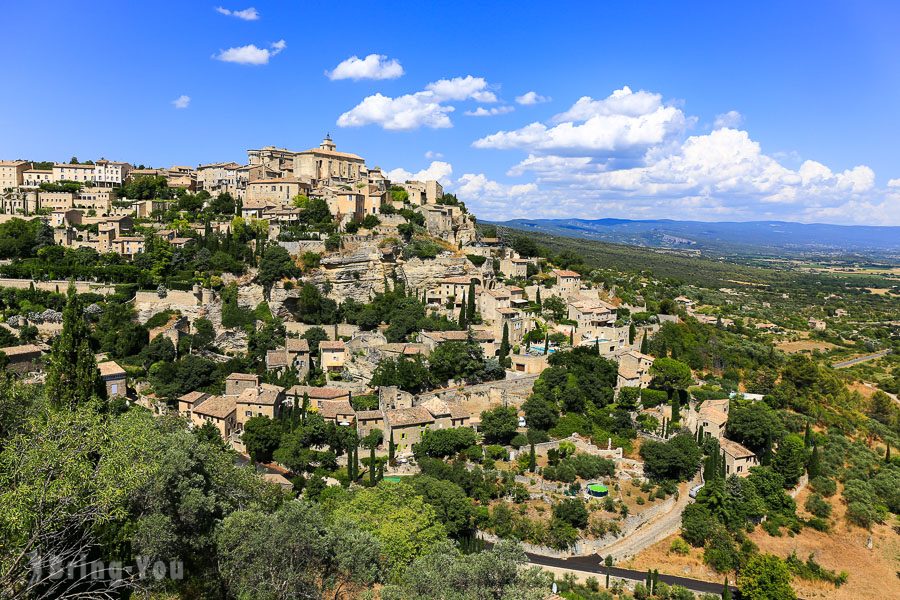
Abbey of Senanque
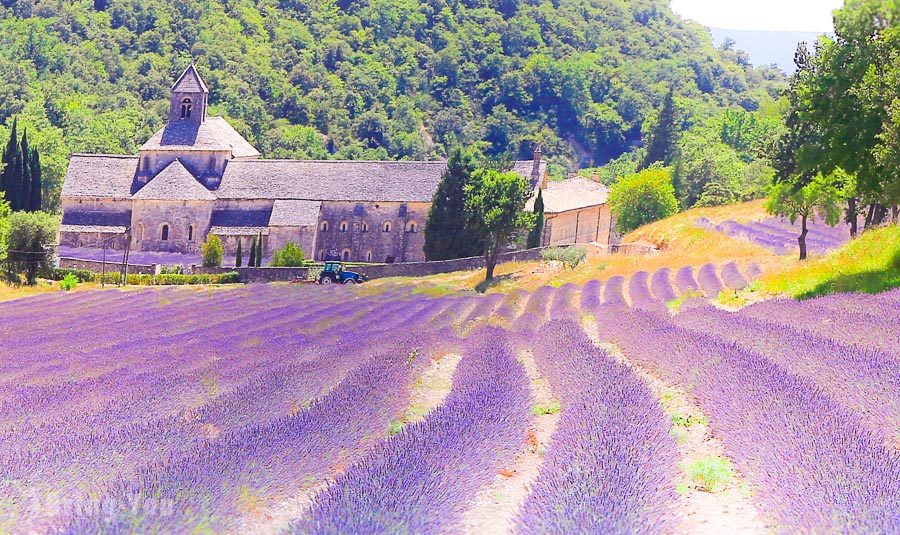
Dubbed one of the most scenic monasteries in the country, the Cistercian Abbaye Notre-Dame de Sénanque is smack dab in the heart of Gordes village, with a long-established history dating back to the 12th century.
The old washed-out walls of the ecclesiastical construction open out to the mesmerizing rows of purple blooms nestled at the back of the premise. If you’re here on your own, you can sign up for a guided tour it offers.
The beautiful surrounding ambiance provides a great base for a pleasant walk. It’s peppered with big trees and bushes. There’s also a small white statue of the Virgin Mary up the hill peeking between the branches.
Fontaine de Vaucluse
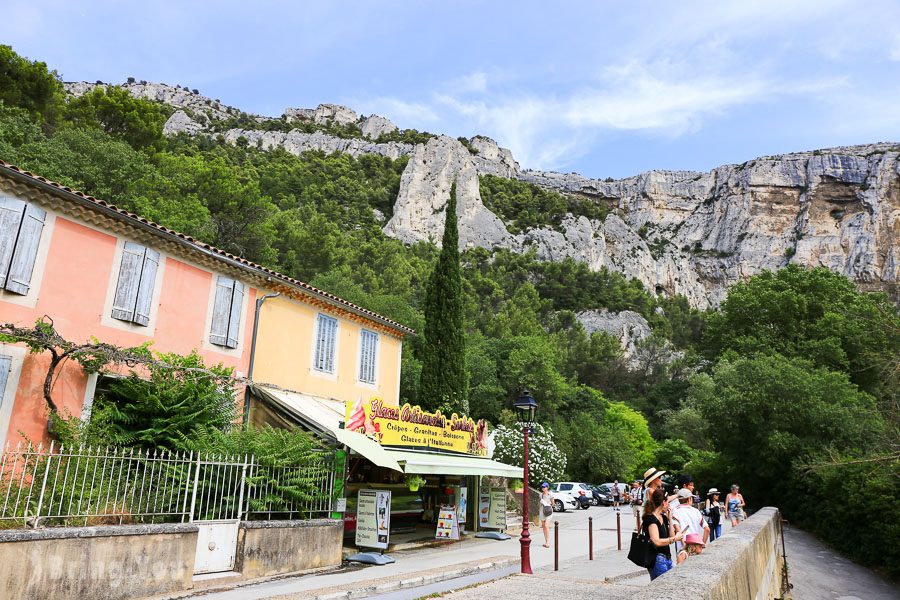
To reach Fontaine de Vaucluse, you have to complete a whole loop all the way from Gordes southeast before taking a turn up north again for half an hour by car. As the name suggests, Fontaine de Vaucluse serves as a beacon of a green-turquoise spring sitting at the bottom of a 230-limestone cliff all the way through the canals of L’Isle sur la Sorgue.
The spring is so big that it delivers a whopping amount of 630 million cubic meters of water discharge every year. For that reason, Fontaine de Vaucluse is known as one of the largest springs in the entire world.
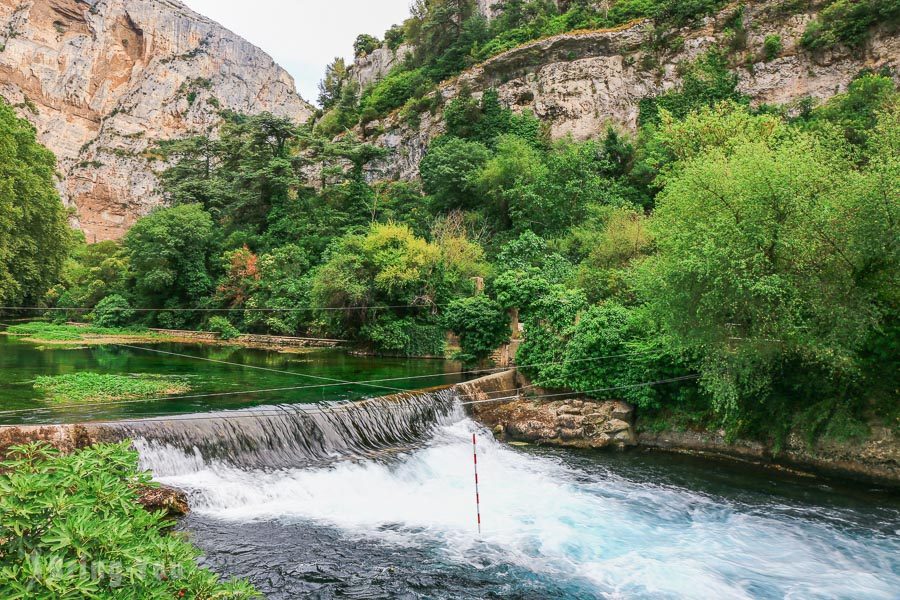
You can walk from the beginning of the wooded trail along the current to embrace its magnificent beauty and immerse in this serene forest bathing experience.
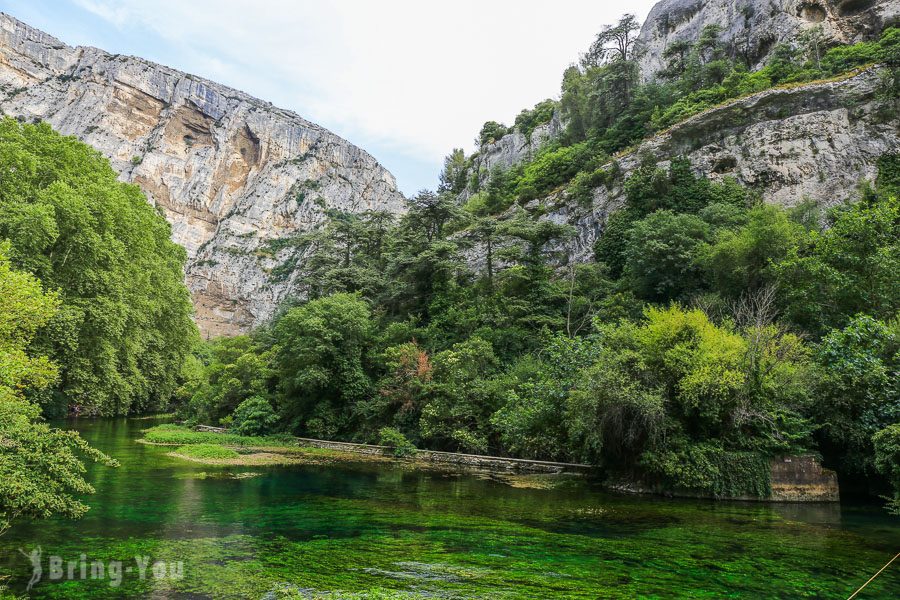
Along the way, you should find some rest stops and cafes which mostly scatter around the center of town.
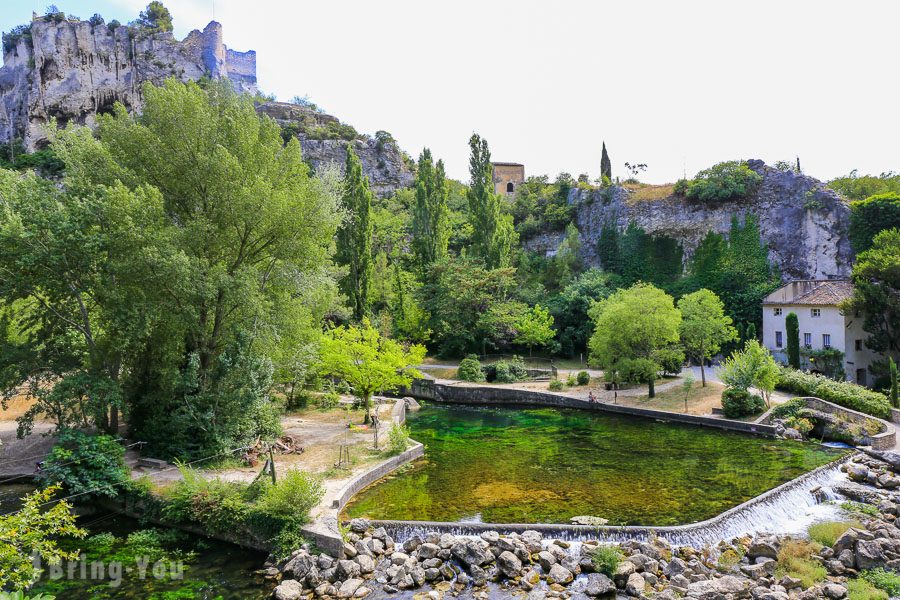
If you’d rather take it slow than tucking all of those places in a full-day trip, spend a night in each town you visit. Get there in summer so you won’t miss out on the dramatic lavender blossoms in full bloom.
